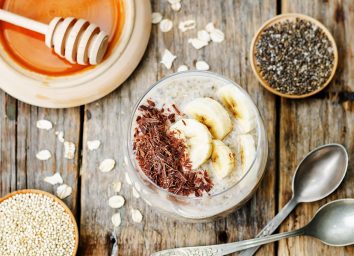25 Tips to Cook Once, Eat for a Week

When you’re feeling completely empty at the end of your day—no energy, nothing in your stomach, zero willpower—the last thing you want to do is spend time getting dinner ready. That’s why meal prep is ultimately the key to weight loss success. Doing a little extra work now so you can have an easy meal later seems like a small price to pay to save you from ordering gut-busting take-out.
Whether you cook full recipes or just prepare a few healthy basics for a meal-prep buffet, stocking your fridge with the right kinds of fuel will save you a lot of time—and calories—throughout the week. Plus, research has shown that spending more than an hour a day on meal prep is linked to better dietary habits, like eating fruits and vegetables, which can help the scale tip in your favor.
With a little know-how and planning, you can easily prep seven days’ worth of flat-belly meals and grab-and-go snacks over the weekend, ensuring your diet doesn’t fall off track during the hectic work week. To help you strategize, we compiled some of the best meal prep Sunday tips to help you get out of those mid- and late-week take-out ruts. That stressed, empty “Thursday You” will certainly be thanking “Sunday You” for the reprieve.
PLAN AHEAD
MAKE TIME

For meal prep to work, you have to actually find time to cook! Sunday works the best for most people for obvious reasons—it’s closest to Monday to keep your food fresh throughout the week, and it’s a weekend so you have time off. Even if you don’t have much time on Sunday (you’ll need 2-3 hours), just getting the shopping out of the way or getting the prep out of the way will still save you time during the week. But if you don’t happen to have time on the weekend, make Monday night your shopping and/or prep night. You can also split up your meal prep into a Sunday night and Wednesday night cooking fest. Fun fact: Shopping on Wednesday is one of our best supermarket shopping tips.
WHAT DOES YOUR WEEK LOOK LIKE?

You have to do more than plan what you’re going to eat for the week; it’s also important to plan when you’ll eat your healthy meals. Do you need breakfast, lunch, and dinner every day or is there an office meeting with a team lunch on Monday? Are you going on a business trip on Thursday? Are your parents coming to visit? Maybe you planned to meet up with a friend one night. Make sure to factor in exactly how many days you need to be prepping for.
DOUBLE IT
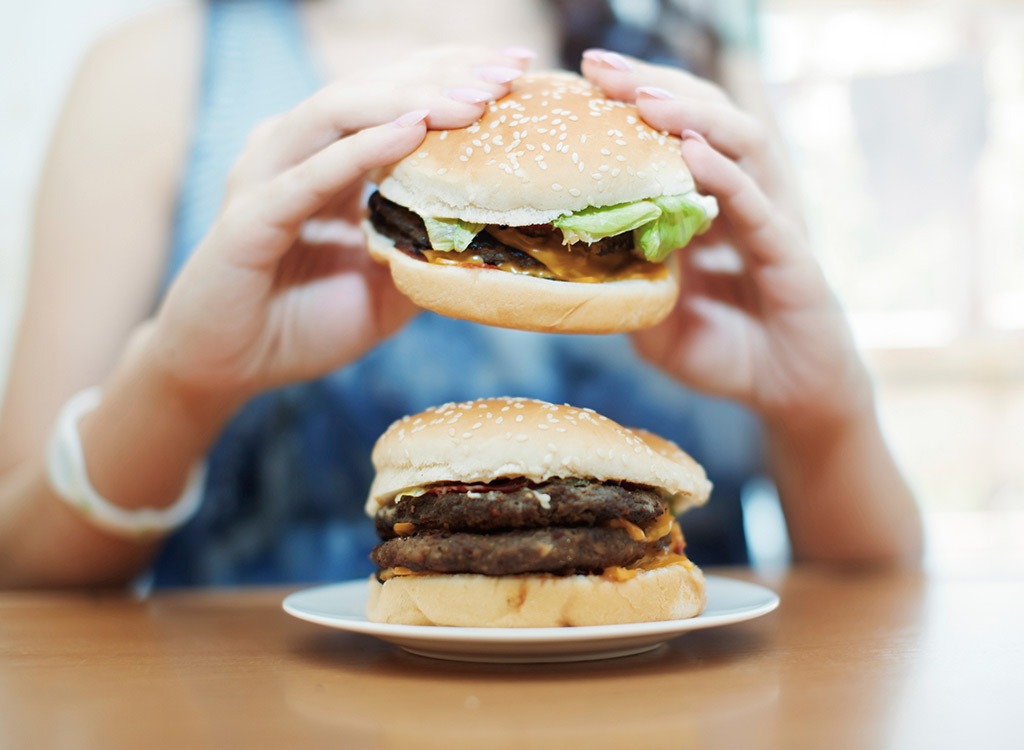
If you want to make full recipes to eat throughout the week, go through your cookbooks and pick recipes that make large batches or choose ones that you can double. Even if a recipe is intended for one person or one night, just doubling or tripling it will allow you to cook it once and eat for a week. Before you head to the store, do the calculations first. Usually, the rule of thumb is to double big items like fats, proteins, and produce, but adjust smaller items like spices and seasonings to taste. And when it comes to cooking, it usually won’t be double the time. Check the recipe for doneness at the time called for in the recipe, and if it’s not ready, check again in roughly five-minute increments.
FIND INGREDIENT OVERLAPS

When picking recipes for meal prep, try grouping them by overlapping ingredients. If you need to make rice one night for a chicken curry dish, you can use it later in the week for fried rice. Spinach can be used in a salad or in the filling of lasagna roll-ups.
MIX IT UP
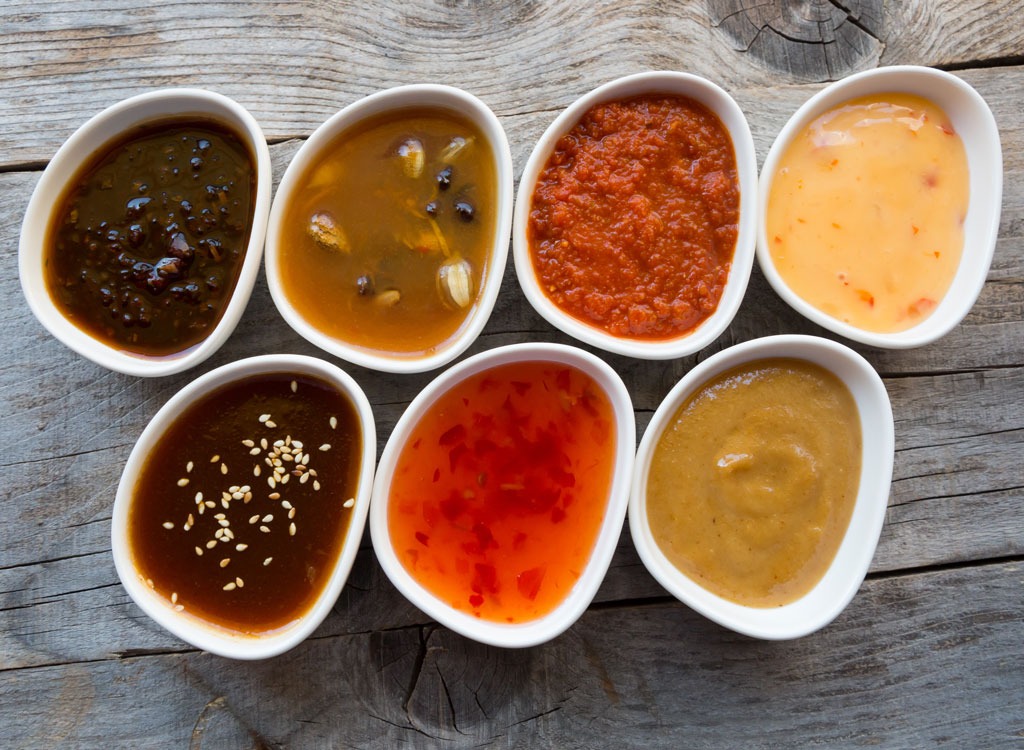
If you can’t fathom eating the same thing two days in a row, plan on making two or three different dishes that you can alternate or mix-and-match throughout the week. With the right planning and creativity, you can make the same food go a long way. By just making different sauces, already prepped chicken and vegetables can be an Asian stir-fry one night, Mexican chicken fajitas the next, and Italian chicken cacciatore another.
GO FREEZER-FRIENDLY

The first thing to consider when choosing recipes is making sure they’re freezer-friendly. Some food is better suited to freezing and reheating than others: “Soups, broths, smoothies, and sauces can be frozen in ice cubes trays, which comes in handy for portion control and weight management. Veggie-based casseroles, whole-grain wrap burritos, and homemade turkey or veggie burgers can be frozen individually, giving family members a healthy grab-and-go option,” explains Stephanie Brookshier, RDN, ACSM-CPT. When your meal is already made and only needs to be reheated, you’re less likely to give into calling for takeout on hectic evenings.
1 + 1 + 1

If you’re preparing individual meals for lunch or dinner just keep in mind the rule of threes: one protein, one starchy carb, and one fresh produce. While the portion sizes of each will differ based on your nutritional needs, it’s important to get all three in there along with some fat. The perfect fuel combination of protein, fat, and carbs provides you with long-lasting energy and prevents spikes in blood sugar! Make a Buddha bowl like the one you see above to easily combine healthful ingredients into a delicious mix.
MAKE A LIST

Once you know how many meals you’re making and what you’re making, use your recipes to write a detailed shopping list with specific numbers, weights, and measurements. Jessica Fishman Levinson, MS, RDN, CDN explains, “Making a list will help you avoid unhealthy impulse buys, and knowing what you’re cooking in advance will prevent you from ordering sodium- and calorie-filled take-out fare or bingeing on whatever’s in the pantry when dinnertime rolls around.” Keep in mind to look through your pantry and fridge before heading out the door to see if you already have some things you need.
BUY IN BULK

Because you’ll be prepping for the whole week, it makes sense to purchase most of your items in bulk to not only have enough but also to save money! Boneless chicken breasts, one of the priciest cuts of poultry, is only $33.73 at Costco for a 9.14-pound pack, but would ring out to $40.41 at a local supermarket. Read about more simple swaps to save over $250 on your monthly groceries.
GET PROPER CONTAINERS

Make sure you have quality containers before you start your meal prep journey! Mason jars, Tupperware, and plastic bags will all do. You can also check out a local restaurant supply shop for some takeout-style containers. If you’re unhappy with your plastic containers, recycle them and replace them with stainless steel or glass containers. If you’re going to go plastic, choose BPA-free containers with lockable lids to prevent spilling.
PREP & COOK
GET CHOPPING

Wash, chop, and prepare most of your veggies for the week—whether they’re going to be left raw or used in a cooked dish—and store them in Tupperware containers. Ilyse Schapiro, MS, RD shares her reasoning, “I love vegetables, but I’m more likely to eat and cook them if they’re cut and ready to go. Store each vegetable in an individual container so when it comes time to cook, all you have to do it grab the ones you want and get to work. They’re also great to have on hand to snack on when you get hungry.” There are a few exceptions, though. For example, slicing strawberries ahead of time is a mistake because oxidation devalues some of their nutrition, and an herb like mint is best chopped immediately before using.
ROAST
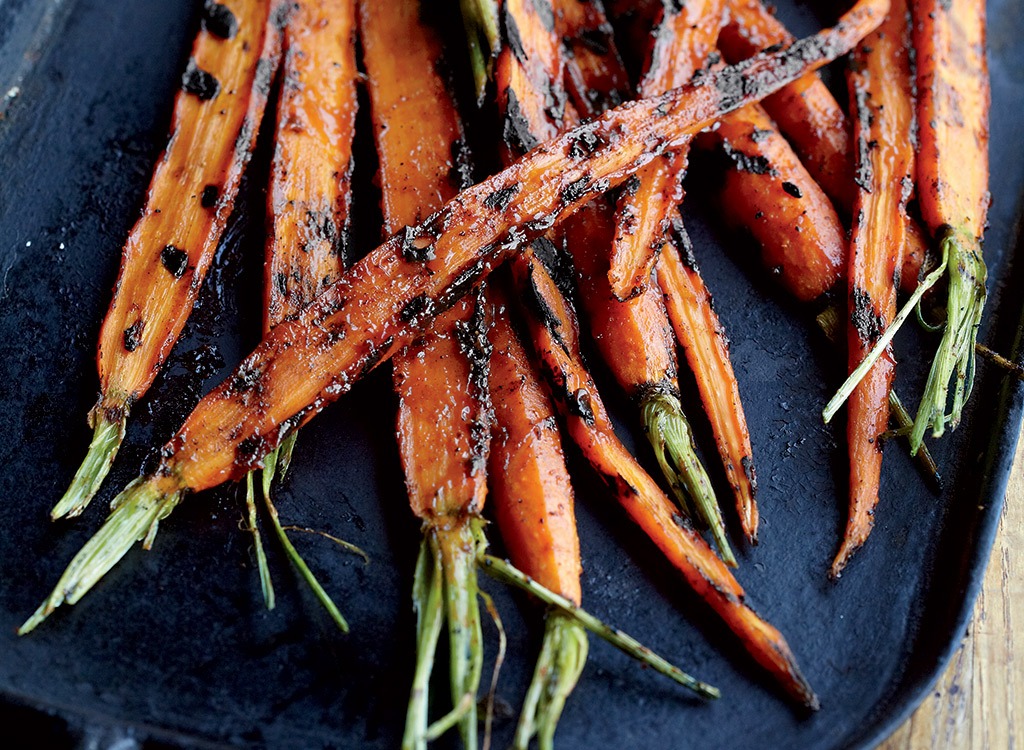
Alissa Rumsey, RD recommends roasting “a large batch of veggies so that they’re ready to use throughout the week. Veggies add fiber, vitamins, minerals, and antioxidants to your diet and can easily bulk up a variety of meals.” We recommend using veggies that roast well, like carrots, asparagus, zucchini, cauliflower, and peppers, which you can make in a large batch and then use all week in many of your meals, like in pasta dishes, salads, or on a sandwich. You can also roast regular or sweet potatoes to use as your carb options.
PREP YOUR PROTEIN

If you’re going for more of a buffet-style meal prep, be sure to prep one or two proteins, such as chicken, black beans, or eggs. You can keep them in the fridge to use in wraps, salads, sandwiches, or Buddha bowls. If you’re making chicken, consider buying a ready-made rotisserie chicken or roasting your own! This will help cut down on individual cooking times. Meat proteins can be kept in the fridge from 3-4 days.
GET YOUR GRAINS

Whole wheat pastas, quinoa, farro, rice, barley, whatever your pick, get your grain on. These grains can be used as sides, the base of a bowl, or in main dishes like fried rice. Usually, these grains will last in the fridge for two to three days, so be sure to freeze a portion if you plan to eat it later in the week.
UTILIZE YOUR GADGETS

It’s not easy to make two or three dishes by yourself. Why not break out those unused wedding gifts? Slow cookers, rice cookers, pressure cookers, oven, microwave, toaster oven, utilize them all! Yes, it might mean for a little extra clean up, but it will drastically cut your prep time down.
COOK SMALL

Instead of making large casserole-style dishes, if you’re making something like meatloaf, make it in individual portions instead of a whole loaf. Or, choose recipes that are already made pre-portioned, like muffins! That way, when you freeze it, it’s already ready to go, rather than you needing to thaw the whole portion and then take what you need out.
GO RAW
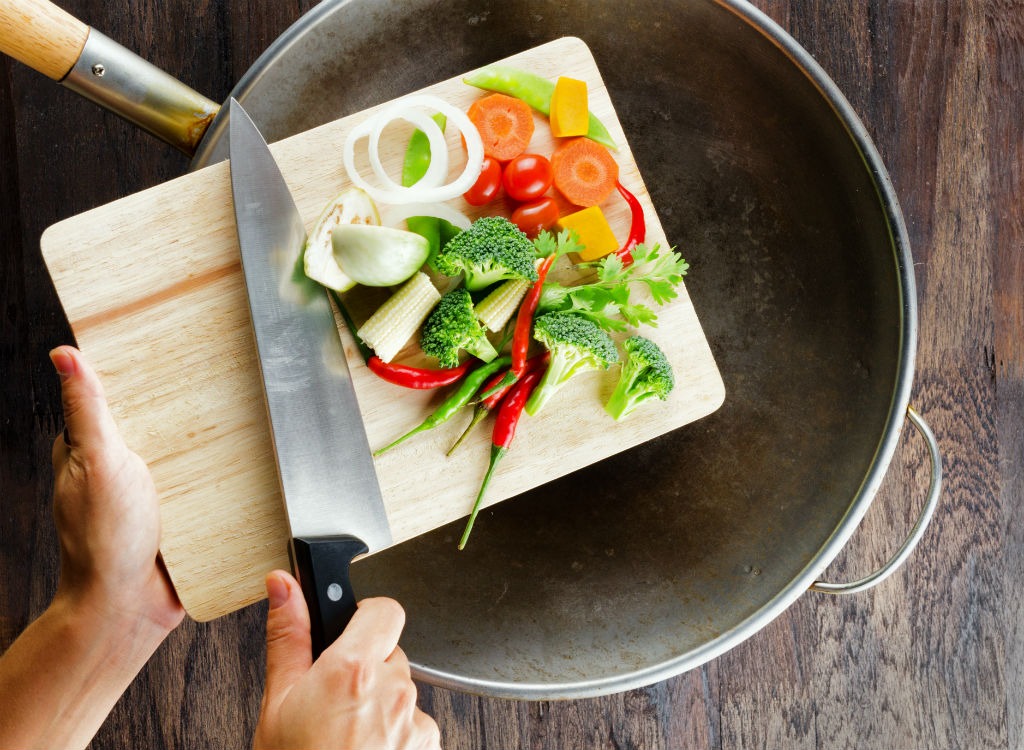
Fully cooking batches of things like casseroles, soups, enchiladas, or pasta dishes that you can reheat in the microwave or oven is always great, but “despite what many people think, you don’t have to cook entire meals ahead of time—that can be overwhelming” says Stephanie Brookshier, RDN, ACSM-CPT. Instead of baking, just prep all your food Sunday and sequester it raw into baggies. This way you don’t feel like you’re eating leftovers every day. Throw a bag of pre-portioned chicken and veggies into the slow cooker before work, or put an unbaked, frozen casserole dish in the oven right when you get home. Sometimes just a little shortcut here and there will save you hours in the long run.
CREATE BUILDING BLOCKS

Similar to a bouillon cube, you can make yourself meal building blocks to get dinner started in a jiffy. Freeze pre-portioned packets of chicken or vegetable stock, pesto, or herb compound butter, or make up baggies of your own spice mixes—oregano, basil, parsley, and thyme for an Italian dish; onion, garlic, and chili powder, paprika, cumin, and cayenne pepper for a Fajita seasoning; and chili powder, cumin, coriander, cayenne, paprika, and garlic powder for any barbeque rub.
STORAGE
LABEL, LABEL, LABEL

Use dry erase markers for plastic and glass containers, or use a sharpie on a piece of tape or directly on a plastic bag. If you’re making individual, pre-portioned meals, use a different colored sharpie to designate which day of the week each meal corresponds to. If you’re freezing food, be sure to add the date on which you made it or it’s date of expiration. Usually food will last three months in a freezer, but that guideline is for quality only. Frozen foods should remain safe indefinitely.
TAKE A CHILL PILL

Not all food will last the whole week in the fridge, so be sure to freeze some of it. After you’ve cooked your food, you have to make sure it cools completely before putting it in the freezer. When you put away foods that are still warm, it can raise the general temperature of the freezer. When this happens, it may cause the food around it to partially thaw and refreeze, which alters the taste and texture. Moisture can also evaporate and condense in the plastic container, which will make your food mushy. To keep food safe, cool freshly cooked dishes by placing food in a wide, shallow container and refrigerate, uncovered, until cool. For soups, you can pour them into a metal bowl and set in an ice bath.
OPTIMIZE FREEZER STORAGE

Use moisture-proof zipper bags and containers to help minimize freezer burn. Store foods in small servings to help them freeze quickly and to allow you to defrost only what you need. If you’re storing individual servings of something, like pancakes, freeze everything first in a single layer. Once cold, you can stuff them all into a bag so they won’t stick together. For soups and stews, keep them in a plastic bag to save space: fill the bag and flatten it as you seal it to remove air from the bag and allow it to be stackable.
ORGANIZE YOUR FRIDGE

With all this prepped food, you’re going to need some fridge space. Put the foods that will be used earliest in the week in the front and the foods for the end of the week towards the back. Be sure to clean out your fridge weekly to keep food fresh. To increase the shelf life of your produce, separate ethylene-producers—foods like avocadoes, ripe bananas, and tomatoes that release a naturally-occurring plant hormone which speeds up their ripening process—from the veggies that are spoiled by the gas (broccoli, spinach, and sweet potatoes).
PRINT A PLAN

To keep on top of everything, print out a meal schedule so you know when and which meal was planned for which day. Set a notification on your phone to remind you that you’ll have to defrost something one day to be used the next.
BON APPETITE!

Now the easy part! You prepped and cooked your meals, so all you have to do is pack them in a bag to ensure a day of healthy eating. If you’ve frozen food, defrost it in the refrigerator—roughly 5 hours per pound—or in the microwave.
MAKE-AHEAD MEALS

These healthy recipes are all great additions to your meal prep repertoire! What are you waiting for? Get prepping!
Breakfast
Overnight oats
Freezer oatmeal cups
Chia pudding
Egg Muffins
Lunch
Mason Jar Salads
Hard Boiled Eggs
Snacks
Fruit and Veggies
Trail Mix
Yogurt Parfaits
Dinner
Casseroles
Slow Cooker Recipes
Lasagna
Stir Fry Freezer Meals

